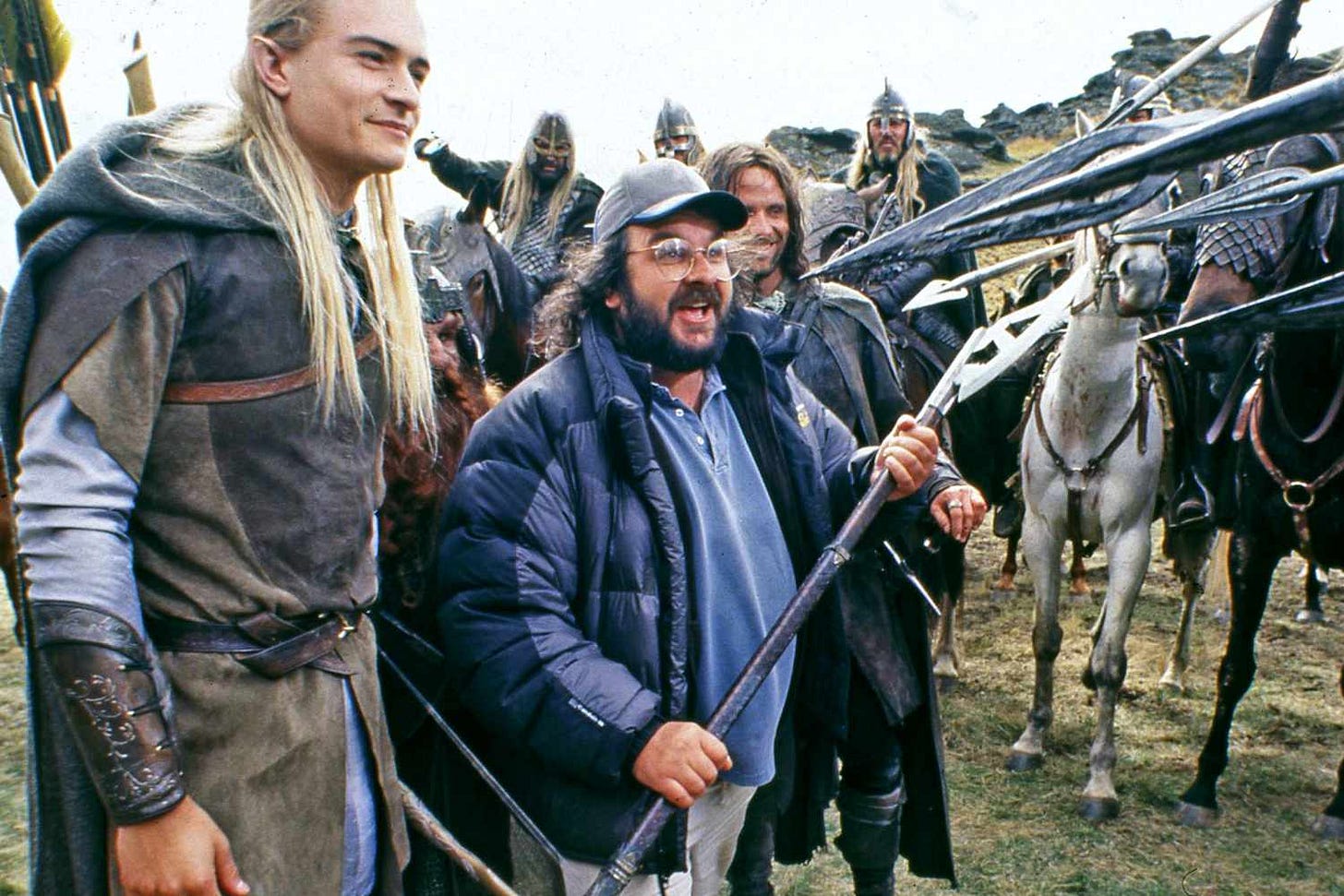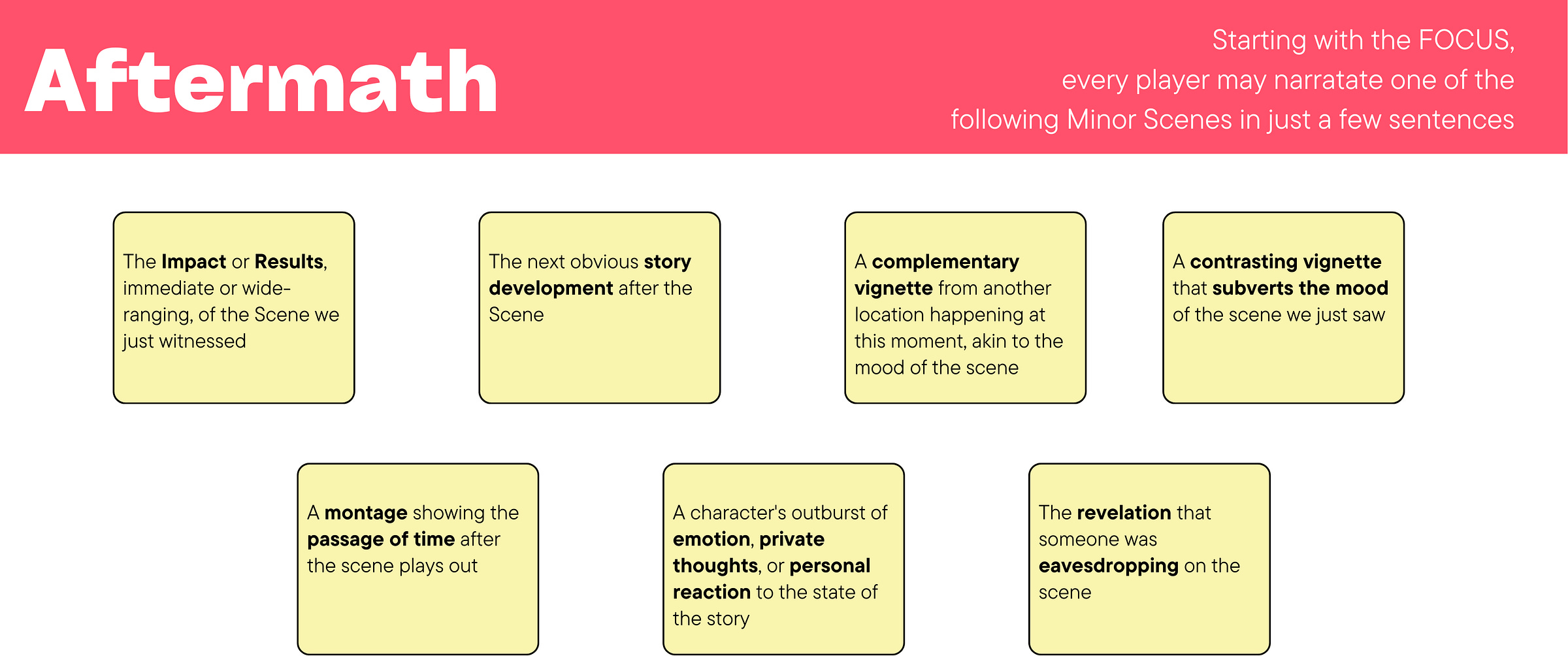Ending each Dramatic Scene in your game with a few great vigettes, or 'minor scenes'
We're almost to the finish line, folks!
Making Great Scenes at your Game Table — a series
Preface: Everyday gamers don’t always know how to make great scenes
Ending out scenes with ‘Scene Breakers’ and resolving the scene
Adding ‘Minor Scenes’ to add action and movement to our story
So far, we’ve been working on a fool-proof procedure for building Dramatic Scenes into your favorite RPG of choice — I’m thinking of calling it something like “Scene Kit: The 0-Charisma Guide to Roleplaying Great Scenes.” And so far, we’ve just about got a full procedure.
But some people have asked “What about little action scenes or vignettes that are just like, a character reflecting, or a simple montage, or some action sequence.” And you better believe we’re folding those into our process!
To recap: We’ve set the stage with a FOCUS character doing some plot-relevant ACTION in an interesting location. We brought in a PARTNER with a MOTIVE who will pursue some pressing need to bring them into conflict with the FOCUS. At some point, the scene ended, possibly with the conflict boiling over, or some new information or danger present, or maybe with a hug and a resolution. Someone said “Cut!” and these scene ended.
Now, it’s time for us to look at the consequences, and pull the camera out to look at the Aftermath of our scene.
Minor Scenes
Minor scenes are additional denouements that can be added after a scene. After a scene takes place, any player at the table, starting with the FOCUS player, may narrate or describe a single vignette using just a few sentences. Choose from:
The results, immediate or wide-ranging, of the scene we just witnessed.
The next obvious plot developments after the scene
A complementary vignette from another location happening at this moment
A contrasting vignette that subverts the mood of the scene we just saw
A montage showing the passage of time after the scene.
A character's outburst of emotion, private thoughts, or personal reaction to the state of the story
The revelation that someone was eavesdropping on the scene.
Is there a better name than “Minor Scenes” for these? Perhaps! But it’s stuck with me for now. What’s really lovely is that a lot of things can happen to express a lot of development and action, sometimes more than even the scene itself managed to pull off! Let’s build on some examples from earlier scenes, and show the minor scenes after, using Elga, Reginald, and Clyde:
Elga the Barbaian is sharpening her axe in preparation to fight the yeti, and Reginald the Wizard comes in asking for help for his Dramatic Scene — he wants Elga to convince the locals to give him access to their secret herb grove. They have a fight, and Elga storms away. CUT! For the Minor Scenes…
Elga narrates that she, in anger, cuts firewood, but realizes how sharp she made her axe in her frustration, and she grins.
Clyde’s player reveals that Clyde the rogue saw her storm away from the wizard, and is seeing the tension develop in his party.
Reginald’s player narrates a montage of them all packing up the dogsled, saying goodbye to villagers, with Clyde eyeing his two companions nervously. Reginald’s player feels bad about the fight, and so he adds a detail where the camera sees Reginald throw the best part of his lunch to Elga’s sled dogs as a gesture of apology after their tiff. Elga’s player goes, “Elga sees this, and nods.”
Later…
Clyde and Elga are sneaking through the Yeti’s lair, and suddenly want to do a Dramatic Scene! As Clyde leads the way, Elga is advocating a cause — she wants Clyde to turn against the haughty wizard with her, and Clyde carefully expresses that he thinks this is a bad idea. Before they can hash it out, the Yeti springs his trap and attacks! CUT! For the Minor Scenes…
Clyde says he shouts for the wizard, and curses Elga under his breath for being so obstinate.
Reginald the Wizard, meanwhile, says he’s been outside the cave making a hot tea while they poke around, hears a roar, and hops up comically to spring into action.
Elga’s player says, “I don’t have a Minor Scene to narrate, I think it’s honestly just time to roll initiative!!”
You see how this goes? We might begin with a simple dramatic exchange of action and emotion, working out tension between PCs, but actually, our structure contains a whole multitude of scenes that use this first dramatic scene as their crux, that way we have continuity between Dramatic Scenes and the RPG we’re playing.
Do I need to make a set of Specialty Scenes?
At this point, you might be thinking, “But Jack, there are plenty of scenes types that still involve exchanges between characters, but aren’t… really covered by your structure. They’re unique, but they still serve and important dramatic functions.”
So perhaps I need a few small bespoke flowcharts for “Specialty Scenes” that you might recognize from the movies, but don’t follow the model I’ve set forth? For example…
The Action Scene
The Lovers’ Quarrel
The Rejection of the Quest
The Death Scene
And more… (?)
Anyhow, in my next post, I’m either going to stitch it all together into one big procedure, or maybe it’s time for me to flesh out some roles or actions for off-screen players and give them an ability to interject or inspire.





There is a potential tension here between the granularity of ‘scene types’ and the utility of the broad-brush approach. Personally, I’d go with the latter because a more generic ‘mechanic’ is easier to grok and apply from situation to situation, rather than having tables fret about ‘what type of scene is this?’ and applying the relevant considerations. But my view is probably not hugely useful because I’m not your target audience here and those who want to understand the ‘how’ of it might well appreciate more ‘guardrails’.